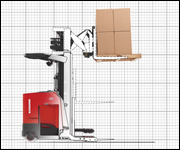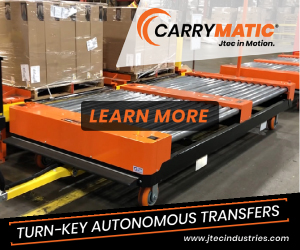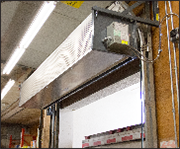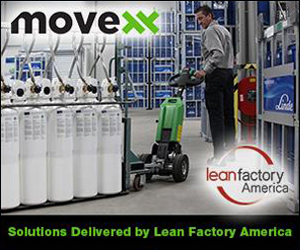 |
|||||||||||||||||||||||||||||||||
| Archive | Subscribe | Send to a Friend | www.mhi.org | Solutions Magazine | |||||||||||||||||||||||||||||||||
|
Top Story
Technology and Innovation
The promise of improved efficiencies and reductions in operating expenses are usually the major drivers when supply chain companies adopt digital technologies. But there’s another benefit that they should consider. Tech advances like the internet of things (IoT), data analytics, artificial intelligence (AI), 3D printing, robotics and blockchain can play a role in companies’ sustainability strategies.
MHI Updates
MHI recently released, in collaboration with Oxford Economics, a new report, “Handling the US Economy: The Economic Impact of the Material Handling Industry.” This report explores the relationship between material handling and wider economy of the supply chain.
Raw materials, goods and finished products enter and exit manufacturing and warehouse facilities through loading docks. Since materials, transfer and transport vehicles and people are moving around regularly, making loading docks safer is important. The goal is to prevent injury to workers while avoiding damage to products and the building.
If your company hasn’t sustained damage from a cyberattack, then you’re one of the lucky ones. According to a survey from the cybersecurity company Tenable Inc., over just the past two years, 90% of companies in the energy, health care and manufacturing sectors have suffered a cyberattack that led to data breaches and either a significant disruption or a complete halt to business operations. To make matters even worse, 62% of companies in these sectors were hit with two or more attacks during that span.
Sustainability
Marcel Proust famously quipped that “a change in the weather is sufficient to recreate the world and ourselves.” There’s no doubt that the weather keeps changing. So what can supply chains be doing now to mitigate the risk?
Companies are pursuing sustainability initiatives that not only make them “green-er” by reducing material and resource use, but are also pursuing initiatives that help supply chain partners and entire industries continue to be viable. These consumption and competitive practices affect the bottom line today, but also reduce supply chain risks and volatility for decades and generations to come.
Workforce
Robotics and automation have quickly become the supply chain and manufacturing industries’ top choice to update systems and increase productivity. With smaller options now available, some robotics designers are adopting new philosophies: that these mobile robots are a tool to be used by employees, and should be designed as such.
The supply chain workforce shortage and skills gap have been the #1 topic of MHI’s Annual Industry Report for the past six years. Recruiting, retaining and developing a diverse management team has proven to be a growing differentiator for supply chain firms. Additionally, the skill sets where women shine (multitasking, collaboration, communication and influence) are highly sought-after in the cross-functional, complex, and fast-paced world of the global supply chains. Given this reality, why do women still only represent 24% of the material handling workforce and only 15% of executive-level positions in supply chain organizations?
|
|||||||||||||||||||||||||||||||||















